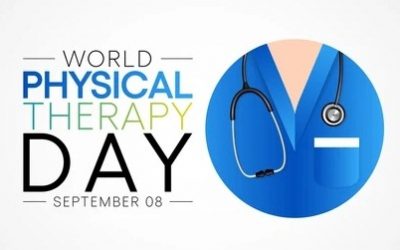Rehabilitation after coronavirus is an important topic against the backdrop of growing number of people who went through the illness. A person discharged from the hospital continues to suffer from the recent illness: many find it difficult to breathe under exertion, not everyone immediately regains their sense of smell, and joint pains appear.
Inna Leonidovna Brovkina, Doctor of Medical Sciences, Professor, Dean of Faculties of Dentistry, Preventive Medicine and Higher Education in Nursing, Head of the Department of Sports Medicine and Physical Therapy of KSMU, tells about how physical exercises may help your body to recover from the illness.
– Physical exercises are an important part of recovering from a serious illness caused by COVID-19.
After the discharge from the hospital, they will help to reduce shortness of breath, increase muscle strength, improve balance and coordination of movements, improve cognitive processes, reduce stress, lift mood and increase self-confidence.
It is very important to create motivation to continue exercising and then track your progress using an exercise diary or an exercise app on your smartphone or watch.
It is necessary to observe safety rules when performing physical exercises, even if there were no difficulties with mobility (walking) and other types of physical activity during the period before the illness.
This is especially important for those who had them in the period before the hospitalization, if there is a history of falls before or during hospitalization, if the patient was discharged from the hospital with the condition of continuing oxygen therapy at home. In all of the above-stated cases, in order to ensure the safety of the exercises, it is better to train in the presence of another person.
Simple rules will help you to exercise without risk to health:
- start physical exercises no earlier than an hour after eating;
- take a break for rest between exercises;
- training is allowed only in the absence of an elevated temperature;
- before doing physical exercises, a person should always first do a warm-up to limber up, and only then move on to more vigorous exercises, and after finishing training, do not neglect stretching and relaxation exercises;
- observe the water regime, drink enough water before, after and during the exercises;
- the exercise time should be increased gradually, the optimal duration of the workout is 10-30 minutes;
- if there are such symptoms as nausea, dizziness, severe shortness of breath, profuse sweating, pain or discomfort in the chest, feeling short of breath, heart palpitations (increase in heart rate by more than 50% of the original value) or interruptions in the work of the heart, weakness, it is necessary to refrain from exercising or stop training and immediately consult a doctor.
It is important to understand whether the intensity of the exercise being performed is optimal for the patient or not. A simple test may be conducted for that purpose: pronounce a sentence and evaluate the nature of its implementation. If a patient is able to pronounce the whole sentence without stopping and without experiencing shortness of breath, then the intensity of the exercise may be increased; if, due to severe shortness of breath, it is impossible to speak or pronounce only one word at a time, then the intensity of the physical exercises performed should be reduced; if the patient is able to utter a sentence, pausing once or twice to catch their breath and experiences moderate to near-severe shortness of breath, then exercise is being performed at the correct level.
The classic means of monitoring the exercise effectiveness is to measure blood pressure and heart rate before and after exercises. If already before the beginning of the workout there is an increased pressure or heartbeat, then the training should be postponed.
Walking is the most natural exercise that is beneficial for improving overall performance and strengthening of the cardiovascular system. You should gradually prepare yourself to go out, starting to walk at home a little. Start with 5 minutes 3 times a day in the first week, 10 minutes 3 times a day in the second week and 15 minutes 2 times a day in the third week. Along with walking, breathing exercises, positional breathing, chest and diaphragmatic breathing training, joint gymnastics and general strengthening gymnastic exercises should be performed.
Patients who have undergone a new coronavirus infection should understand that it is possible and necessary to engage in medical and then recreational physical training, but without excessive effort, with a gradual increase in the load and always focusing on the body response. Residual effects may persist for a very long time – up to six months or more, so you don’t need to make any heroic efforts on yourself and try to get back into shape very quickly.

